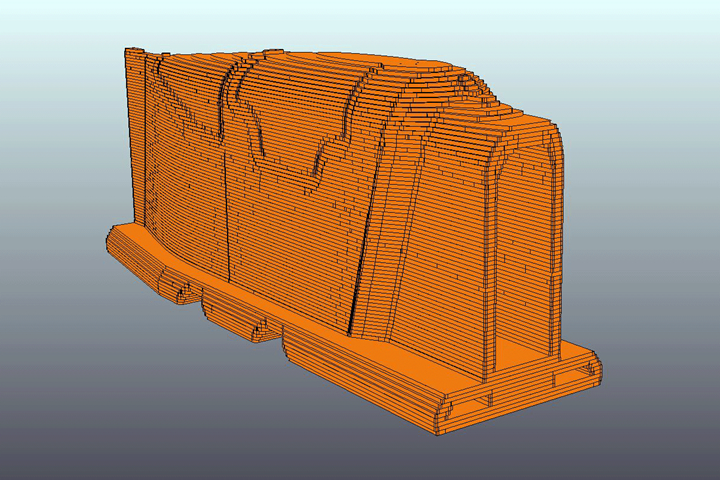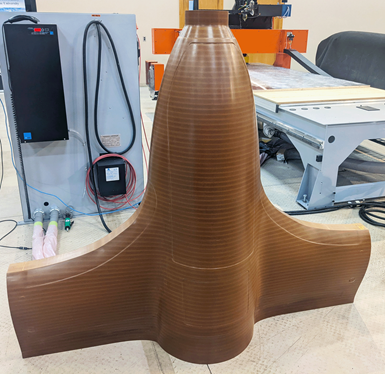Thermwood announces large-format Cut Layer Additive process
Thermwood demonstrates production of low-cost, near-net shape additive metal and thermoset composite parts with no CNC programming required thanks to its system’s machine intelligence capability.
Thermwood (Dale, Ind., U.S.) announces a novel process called Cut Layer Additive. This additive approach produces large-format, near-net shape parts at low cost using a less costly additive machine. Unlike large-format additive printers, like Thermwood’s LSAM, the new process makes large parts from a variety of materials that can’t be printed.
Cut Layer Additive parts are similar to large additively printed parts, in that they are essentially hollow structures made in layers. However, instead of printing the layers, they are instead cut from thick sheets of filler material. One example of this is when making parts for a porous material — such as medium-density fiberboard (MDF) — machined to final size and shape, followed by the addition of a penetrating thermoset resin, such as epoxy, which soaks in and hardens, producing a large “composite” part. Thermwood used this process to produce a 12'-long aerospace tool for the low material cost of $2,000, in less time than it took to additively print the same part.
“Composite” drone body parts made during development of Cut Layer Additive used less than $400 worth of material.
Cut Layer Additive can also make parts from metal as long as the metal can be CNC routed. To demonstrate this, Thermwood made a large aerospace trim fixture using aluminum. Its walls are only a bit over an inch thick, meaning it used less material than about any other way of making it.
Thermwood notes that its system has a machine control program called “Machine Intelligence” which has been taught to make Cut Layer Additive parts without the need for a CNC program. To start, users only need to to provide a CAD file of the basic part shape wanted. From there, the system will provide the user with a variety of options — how to make it, what material to use, how thick to make the walls, where to split layers for nesting, how much trim stock wanted, etc. The machine automatically creates the additive part and the layer segments needed, nests them on the material and creates an internal multi-tool program to cut it all out. Once cut out, the layer segments are reconnected using precision puzzle joints, machined into the segment ends. Dowel alignment holes, between layers, assure alignment, making assembly accurate and easy.
The machine prints information on each layer segment, such as the layer it’s on and how it connects to other segments. This dramatically simplifies sorting and assembly. It also prints a QR code on each layer segment in case operators ever need to recut that particular part. Overall, Thermwood says this cuts down hours of CNC programming.
Watch the video below for more information.

















